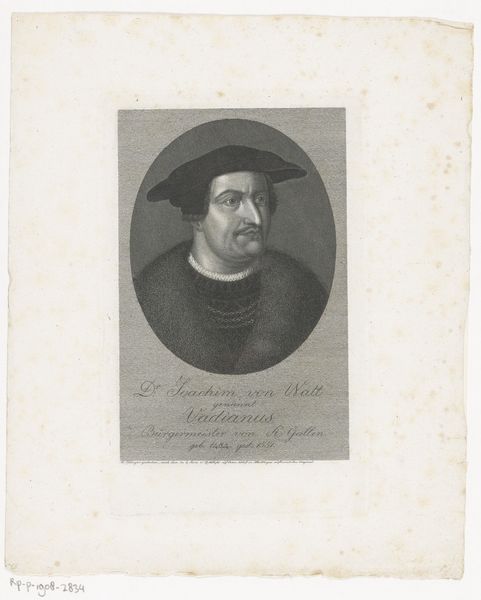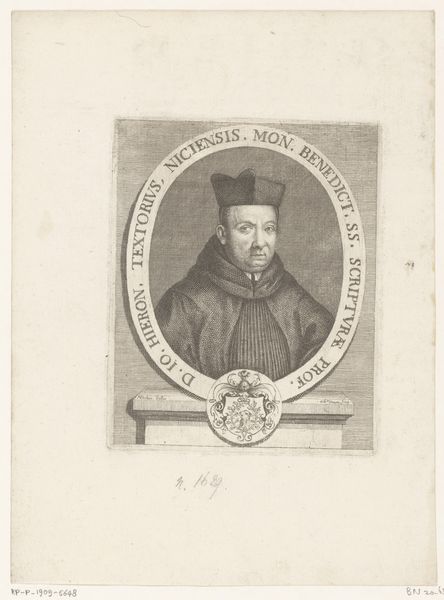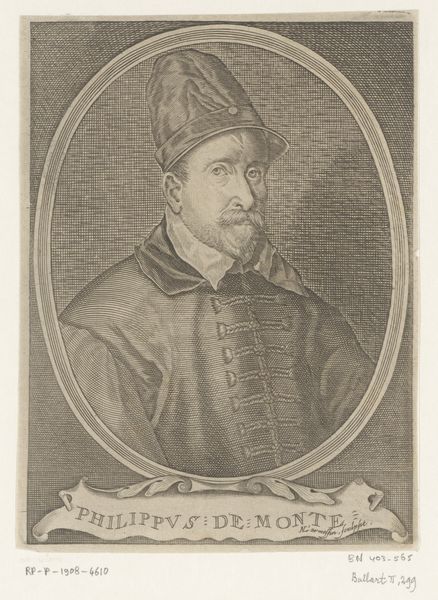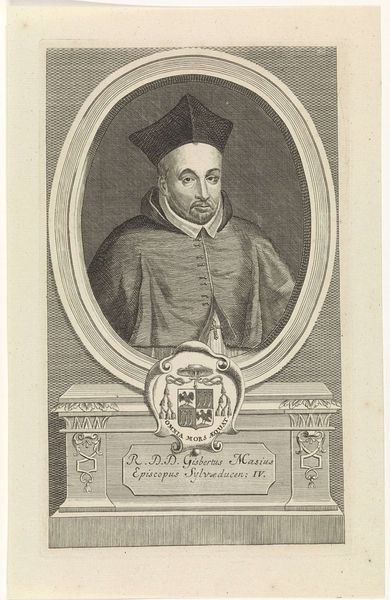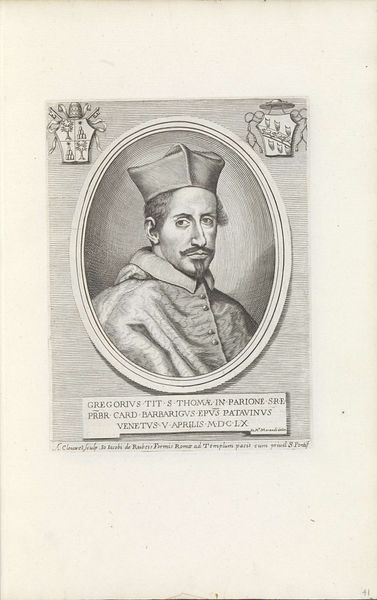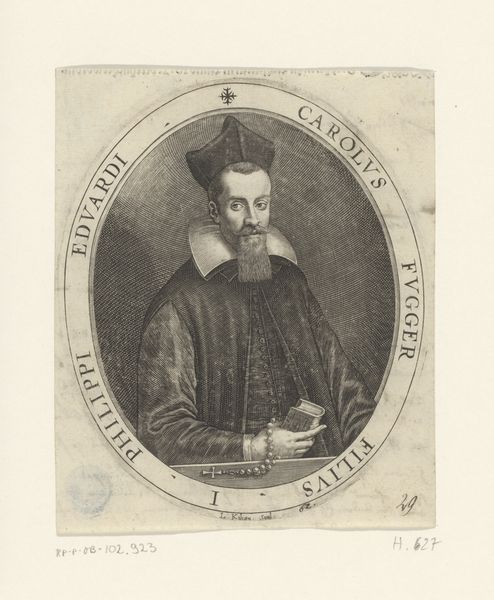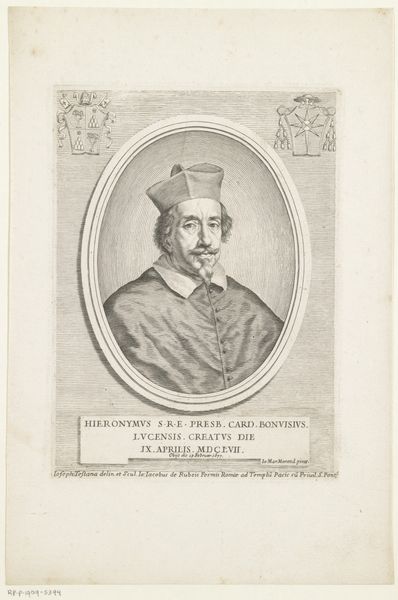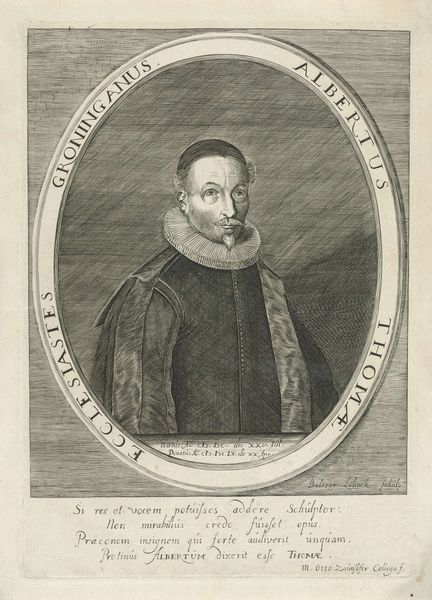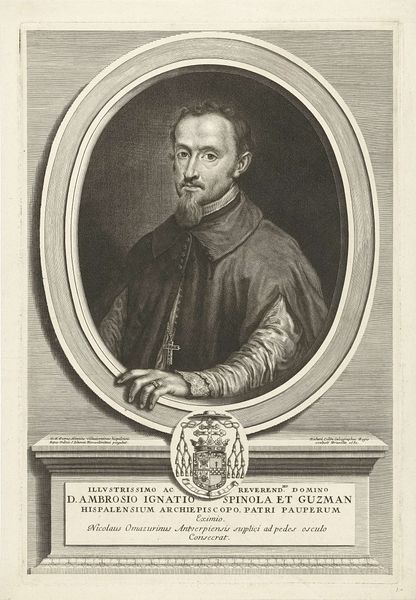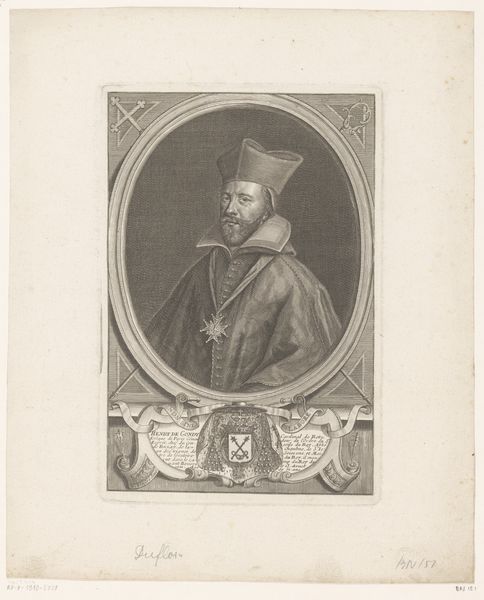
#
portrait
#
pencil drawn
# print
#
pencil sketch
#
historical photography
#
portrait reference
#
pencil drawing
#
academic-art
Dimensions: height 210 mm, width 155 mm
Copyright: Rijks Museum: Open Domain
Curator: Before us is a print entitled "Portret van Sint-Ignatius van Loyola," or "Portrait of Saint Ignatius of Loyola," dating roughly from 1840 to 1905 and attributed to François de Meersman. Editor: It’s a stern portrait, isn't it? The subject, framed by an oval, possesses an intense gaze and what appears to be a very starched collar. There’s a certain somberness to it. Curator: Saint Ignatius, as you know, was the founder of the Jesuit order, so the intensity fits. This image likely served a devotional or commemorative purpose. Note the halo, a powerful visual shorthand. The image draws heavily upon academic art traditions in its refined lines. Editor: The halo is interesting – it's not overly emphasized. It suggests sanctity without being flamboyant. As a print, it's designed for wider distribution, impacting the perception and spread of Loyola's image. Was this part of solidifying his legacy? Curator: Precisely. Prints made such figures accessible, translating power into the visual vernacular for believers and others. The text below the portrait, in Latin, would certainly lend an air of authority and reverence to the representation. Editor: It is carefully constructed to instill respect, even awe. The black and white medium, the severe expression – everything communicates purpose and discipline. Yet, is this an accurate portrayal of the man, or an ideal constructed by the Church? Curator: Ah, there’s the crux of it. The portrait becomes a vehicle for promoting particular ideals and aspects of Saint Ignatius, filtered through the lens of the institution and its social position. Editor: Indeed. These kinds of images act as cultural artifacts, shaping and preserving cultural values. That penetrating gaze seems intended to leave a lasting impression. Curator: Exactly. An impression meticulously managed, I might add. But as we have seen, there are ways of considering how historical personages persist, shifting their value over long stretches of history through symbol, print and other mediums. Editor: True, thinking of historical images lets us perceive those values over time. What appears like a simple portrait contains volumes.
Comments
No comments
Be the first to comment and join the conversation on the ultimate creative platform.
